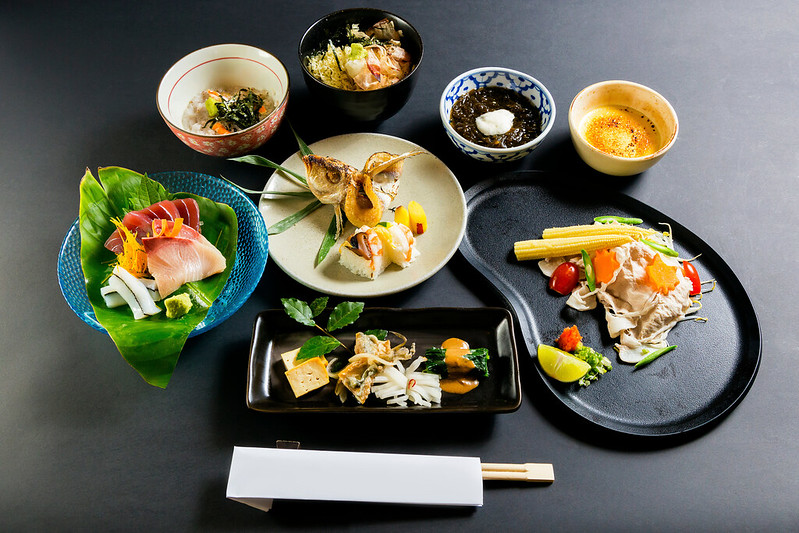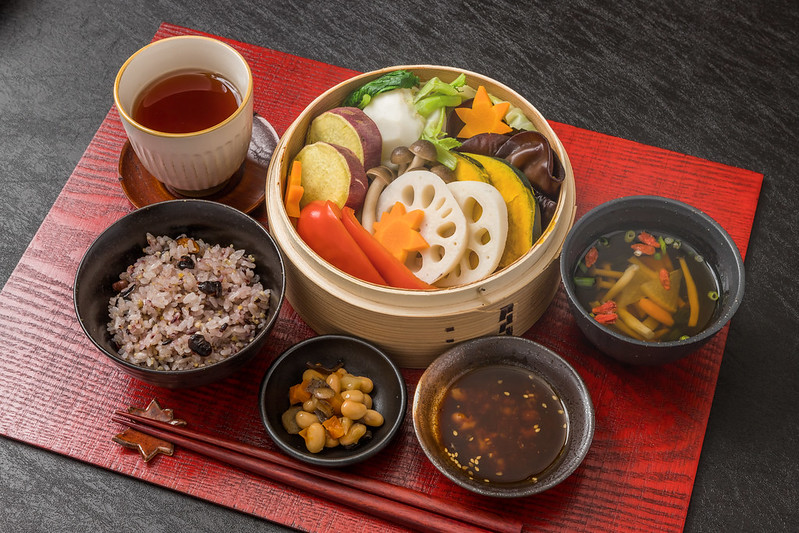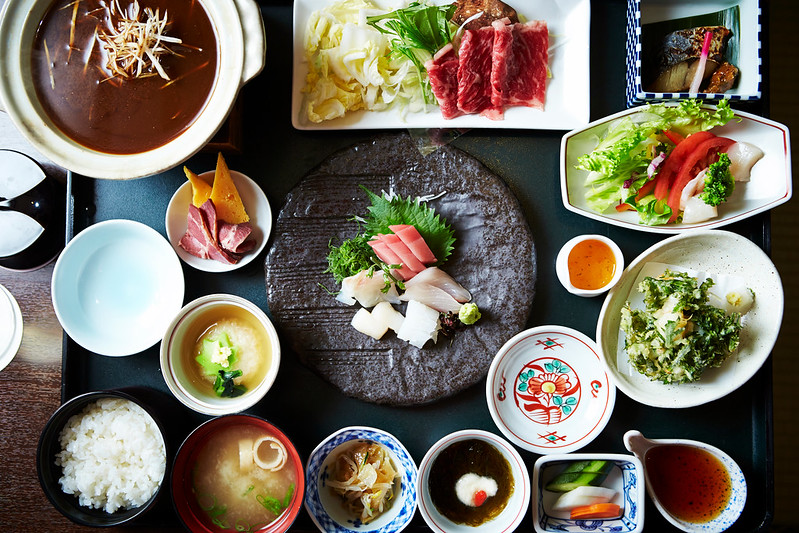
Kaiseki: A Set Menu to Tickle Your Tastebuds
The Japanese take careful measures in almost everything they make — in clothes, cars, fine timepieces, electronics, and of course, in food.
Kaiseki (懐石) or kaiseki-ryōri, is a traditional Japanese multi-course dinner. The term can also refer to the many skills and techniques involved in the preparation of the meal. There are essentially two types of kaiseki: a set menu of select foods served on an individual tray, or a simple meal that a host serves his guests at a chanoyu (Japanese tea ceremony) gathering before a ceremonial tea.
The kanji characters of the word kaiseki literally mean “bosom-pocket stone,” said to be coined by Sen no Rikyū (1522 – 1591), or Rikyū, who is thought to have influenced the Japanese chanoyu, “Way of Tea.” Kaiseki is the frugal meal served in the austere style of chanoyu that came about from the practice of Zen monks warding off hunger by putting warm stones in the front fold of their robes by their stomach.
The more modern form of kaiseki is considered more traditional Japanese haute cuisine that uses mainly four traditions in food preparation: imperial court cuisine, derived from the 9th century during the Heian period; Buddhist cuisine of temples, from the 12th century during the Kamakura period; samurai cuisine of warrior households), from the 14th century during the Muromachi period; and the tea ceremony cuisine, from the 15th century during the Higashiyama period of the Muromachi period.
The basic structure of kaiseki cuisine includes “One Soup and Three Dishes” (1 soup dish, 1 main dish, 2 side dishes) referred to as a setto, “set”). More modern versions include tastes of rich dishes elaborately prepared by well-trained chefs. Kaiseki cuisine makes a point of incorporating seasonal ingredients with the main components of the dishes: vegetables, fish, and various grains and beans. Seasoning is kept to a minimum to highlight the natural flavors of the main ingredient; rather than overpowering it, elevating the inherent flavors.
Kaiseki are usually small artistically arranged dishes that come in sequence:
Sakizuke – appetizer
Hassun – seasonal sushi and several smaller side dishes
Mukōzuke – a sliced dish of seasonal sashimi
Takiawase – vegetables served with meat, fish, or tofu
Futamono – a “lidded dish” such as soup
Yakimono – flamed grilled food
Su-zakana – pickled vegetables to clean the palate
Hiyashi-bachi – chilled, lightly cooked vegetable, served only during summer
Naka-choko – another palate cleanser such as light acidic soup
Shiizakana – a substantial dish such as hot pot
Gohan – rice
Kō no mono – seasonal pickled vegetables
Tome-wan -miso-based or vegetable soup served with rice
Mizumono – a seasonal dessert
The dishes arrive at the table to showcase the brilliant techniques and diversity of the cuisine. It takes extensive effort and skill to master the art of preparing a kaiseki meal.
